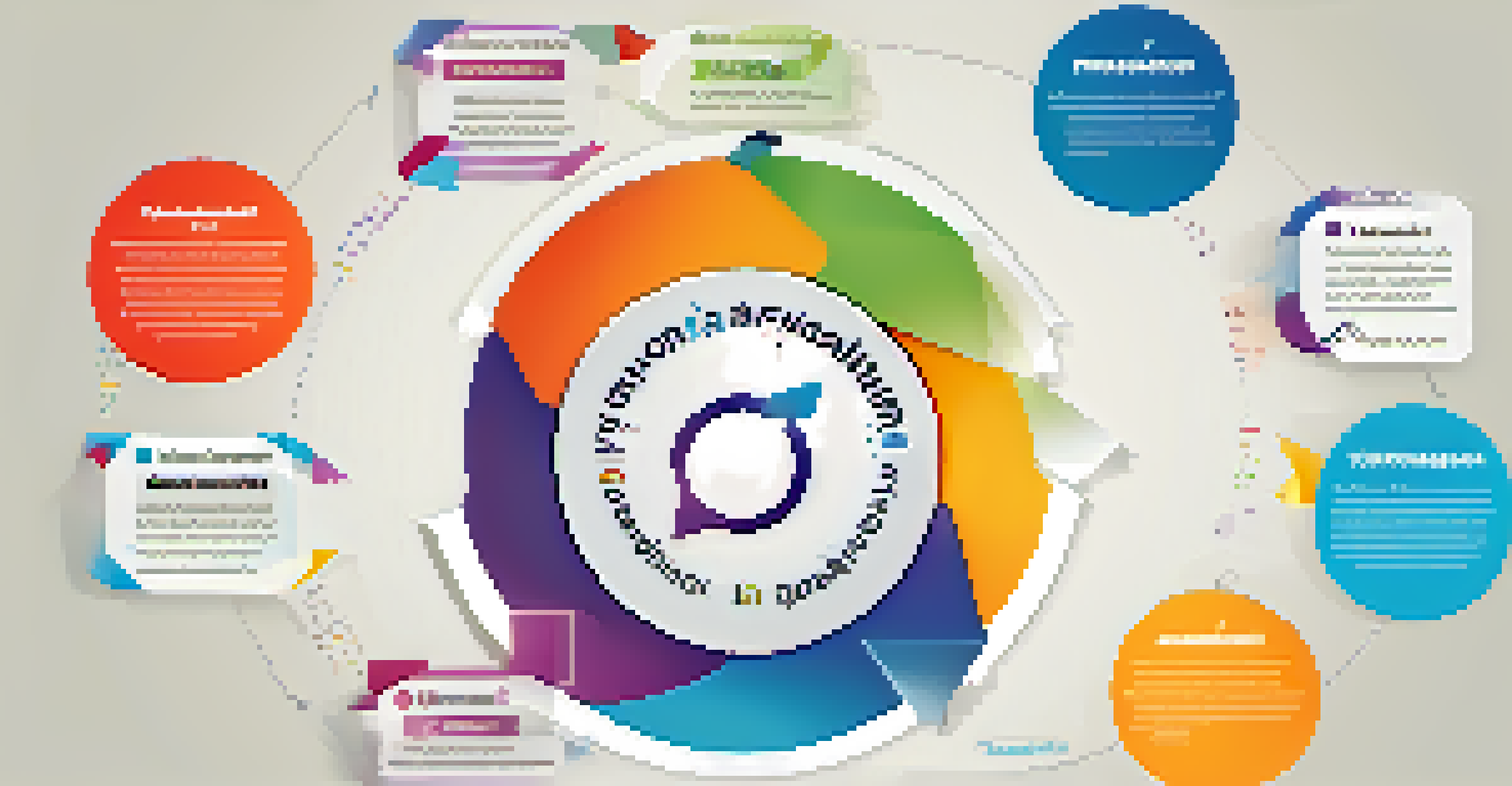How to Ensure Quality Assurance in Your LMS Content

Understanding Quality Assurance in LMS Content
Quality assurance (QA) in Learning Management Systems (LMS) refers to the systematic process of ensuring that educational content meets specific standards. It involves evaluating the content for accuracy, relevance, and engagement level. By focusing on QA, organizations can enhance the learning experience and ensure that users gain the knowledge they need effectively.
Quality is not an act, it is a habit.
To put it simply, think of QA as a safety net that catches potential issues before they reach learners. Just like a chef tastes a dish before serving it, QA ensures that the educational content is both palatable and nutritious for the mind. This not only builds credibility but also fosters a culture of continuous improvement.
Furthermore, implementing QA processes can significantly reduce the chances of learner frustration and disengagement. When users encounter well-structured and error-free content, they are more likely to stay motivated and achieve their learning goals. In this way, quality assurance is not just a checkbox; it's a pathway to success.
Establishing Clear QA Standards for Your LMS
The foundation of effective quality assurance is setting clear standards. This means defining what quality looks like for your LMS content, including aspects like accuracy, relevance, format, and accessibility. By establishing these benchmarks, you create a roadmap that guides content creators and reviewers alike.

For example, you might decide that all course materials should be updated every six months to ensure they reflect the latest information. This not only keeps your content fresh but also demonstrates your commitment to providing the best learning experience. Having clear standards empowers your team to produce content that meets your organization's goals.
Importance of QA in LMS Content
Quality assurance ensures educational content is accurate, engaging, and relevant, enhancing the overall learning experience.
Moreover, involving key stakeholders in developing these standards can lead to more comprehensive guidelines. By gathering input from educators, learners, and even subject matter experts, you can create a well-rounded set of quality metrics that cater to all perspectives. This collaborative approach helps foster a sense of ownership and accountability in the QA process.
Incorporating Feedback Mechanisms for Continuous Improvement
Feedback is a vital ingredient in the QA process, allowing you to refine your LMS content continually. By implementing feedback mechanisms, such as surveys or discussion forums, you can gather insights from learners on what works and what doesn’t. This information is invaluable for making informed adjustments to your courses.
Feedback is the breakfast of champions.
Consider setting up regular feedback sessions where learners can share their experiences openly. This not only helps you identify issues but also shows learners that their opinions matter, fostering a positive learning environment. When students feel heard, they are more likely to engage with the content and provide constructive feedback.
Additionally, analyzing feedback trends over time can reveal patterns that may not be obvious at first glance. By recognizing recurring issues, you can proactively address them before they impact a broader audience. This approach transforms feedback from a reactive tool into a proactive strategy for continuous improvement.
Utilizing Technology to Enhance Quality Assurance
In today's digital age, technology plays a crucial role in streamlining quality assurance processes. Learning Management Systems often come equipped with built-in tools that facilitate content review, tracking, and analytics. Utilizing these features can significantly improve the efficiency and effectiveness of your QA efforts.
For instance, automated testing tools can be used to check for broken links or formatting inconsistencies across your LMS. These technologies save time and reduce the likelihood of human error, allowing your QA team to focus on more complex evaluations of content quality. Embracing technology means staying ahead in the fast-paced world of e-learning.
Role of Feedback in QA Process
Incorporating feedback mechanisms allows for continuous improvement of LMS content, fostering a positive learning environment.
Moreover, data analytics can provide insights into user engagement and performance metrics, helping you identify which areas of your content excel and which need enhancement. By leveraging technology, you can create a data-driven approach to quality assurance that not only enhances the learner experience but also supports informed decision-making.
Training Your Team on QA Best Practices
A successful QA process hinges on having a well-trained team that understands best practices. Investing in training for your content creators and reviewers ensures that everyone is on the same page regarding quality standards and expectations. This unified approach cultivates a culture of quality throughout your organization.
You might consider hosting workshops or webinars that cover various aspects of quality assurance, from writing effective assessments to ensuring accessibility. Encouraging team members to share their experiences and tips can also enhance learning and foster a collaborative atmosphere. When everyone is knowledgeable, the overall quality of content improves.
Additionally, creating a resource library with guidelines, checklists, and examples can serve as a valuable reference for your team. This not only boosts their confidence but also empowers them to take ownership of the quality assurance process. A well-informed team is your best asset in delivering high-quality LMS content.
Monitoring and Evaluating Content Quality Regularly
Regular monitoring and evaluation of content quality are essential for maintaining high standards in your LMS. This involves periodically reviewing existing courses and materials to ensure they still align with your established QA standards. By making this a routine practice, you can catch issues before they escalate.
For example, you might conduct quarterly audits of your LMS content, looking for outdated information or content that no longer meets accessibility guidelines. This proactive approach not only enhances the user experience but also minimizes the risk of learners encountering irrelevant or inaccurate material. Regular checks keep your content fresh and relevant.
Engaging Learners in QA
Involving learners in the quality assurance process not only provides valuable insights but also enhances their engagement and satisfaction.
Additionally, tracking metrics such as completion rates and learner feedback can provide valuable insights into the effectiveness of your content. By analyzing this data regularly, you can identify trends and make informed decisions about necessary adjustments or improvements. Monitoring is not just about compliance; it's about fostering a culture of excellence.
Engaging Learners in the Quality Assurance Process
Engaging learners in the QA process can lead to richer insights and a more effective learning experience. By inviting feedback and encouraging participation, you not only gather valuable information but also empower learners to take an active role in their education. This collaborative spirit can enhance their connection to the content.
Consider implementing user-generated content features, where learners can contribute their insights or resources. This not only diversifies the material available but also fosters a sense of community among users. When learners feel they have a stake in the content, their engagement and satisfaction levels often rise.

Moreover, recognizing and rewarding learner contributions can further motivate participation. Whether through shoutouts, certificates, or even gamification elements, acknowledging their input reinforces the idea that their feedback is not only welcome but valued. Engaging learners in the QA process creates a win-win situation for both parties.